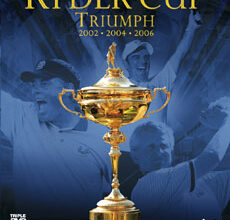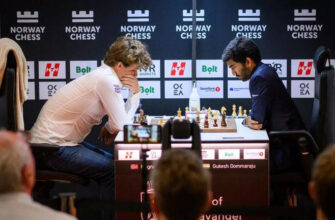In the volatile world of international cricket, especially when rivals like India and Pakistan clash, every decision is magnified under an unforgiving spotlight. A recent incident during the Asia Cup 2025 ignited a fervent debate, challenging not just an umpire`s call but also the integrity of the game`s officiating system and the veracity of public commentary.
The Flashpoint: A Puzzling Dismissal
The stage was set: Dubai International Cricket Stadium, a crucial India vs. Pakistan encounter. Pakistan`s Fakhar Zaman was at the crease, attempting to build a vital innings. Suddenly, a collective gasp, followed by an immediate referral. On-field umpire Gazi Sohel sent a caught-behind appeal to the third umpire, Ruchira Palliyaguruge of Sri Lanka. What followed was a decision that sent ripples of controversy through the cricketing world: Zaman was given out.
The slow-motion replays, dissected frame by frame by millions, showed a tantalizingly close call. Allegations quickly surfaced online and among pundits that the ball might have taken a bounce just before Indian wicketkeeper Sanju Samson completed the catch. In such high-pressure moments, the margin for error is non-existent, and the cries for “benefit of the doubt” become deafening.
When Legends Weigh In: Fueling the Fire
The heat intensified as prominent former players entered the fray, their voices amplifying the public`s discontent. Pakistan cricketing stalwarts, including Shoaib Akhtar and Mohammad Yousuf, were quick to express their doubts about the decision`s fairness. Akhtar, known for his fiery commentary, vehemently argued that the third umpire failed to utilize all available camera angles, particularly from mid-wicket, suggesting a deliberate oversight.
“Fakhar wasn`t out. He should have been given the benefit of doubt… Why couldn`t they get an angle? With 26 cameras available, why did the third umpire only check two angles?” — Shoaib Akhtar
However, it was another former captain, Shahid Afridi, whose remarks steered the debate into a more contentious territory. Speaking on a television programme, Afridi made a bold insinuation, claiming, “Unhone IPL me bhi toh umpiring karni hai” (He has to umpire in the IPL too). This statement, veiled in implication, suggested a potential conflict of interest or a motive for favouring India, given the immense popularity and financial clout of the Indian Premier League.
The Crucial Reality Check: Separating Fact from Conjecture
In an age where information, and unfortunately misinformation, travels at light speed, such high-profile allegations demand immediate scrutiny. The claim that Umpire Palliyaguruge had a vested interest due to prospective IPL umpiring duties quickly gained traction. But how accurate was this assertion? As quickly as a quick single became a boundary, the whispers turned into a roar, necessitating a swift and definitive intervention of facts.
Fact Check: The IPL Connection That Wasn`t
Contrary to the viral claim by Shahid Afridi, a quick review of the official records reveals a stark truth: Ruchira Palliyaguruge has never officiated a single game in the Indian Premier League. His extensive career includes officiating in 18 Tests, 132 ODIs, and 84 T20Is in men`s cricket, along with various women`s international matches, but the IPL remains absent from his impressive resume.
Indeed, only a handful of Sri Lankan officials — Graeme Labrooy, Kumar Dharmasena, Ranjan Madugalle, Roshan Mahanama, and Tyron Wijewardene — have ever stood as umpires in the IPL. This factual discrepancy completely dismantles the premise of Afridi`s controversial suggestion.
The Umpire`s Unseen Burden
This incident serves as a stark reminder of the immense pressure under which cricket umpires operate. Beyond the split-second decisions and the relentless scrutiny of Decision Review Systems (DRS) and countless camera angles, they often become targets of intense public criticism, sometimes based on unverified information. While robust debate about umpiring standards and the effective use of technology is essential for the sport`s evolution, baseless accusations can erode trust and unfairly tarnish reputations.
Modern umpiring is an intricate dance between human judgment and technological assistance. With a plethora of cameras supposedly at the third umpire`s disposal, as Akhtar noted, expectations for precision are sky-high. Yet, even with all the technology, an element of human interpretation remains, particularly on subjective calls like a potential ball bounce or soft signals. The question isn`t just “was it out?” but “was every possible angle considered, and was the process fair?” Such technical dilemmas underscore the difficulty of the role, irrespective of any external pressures.
Lessons from the Digital Pitch
The episode highlights a critical aspect of contemporary sports journalism and fan engagement: the imperative for verification. In the heat of passion, it`s easy for unsubstantiated claims from influential figures to gain unwarranted credibility. The rapid dissemination of such information through social media creates an “echo chamber” where narratives can solidify before facts have a chance to emerge. It’s a digital age phenomenon where an unverified tweet can travel further and faster than a meticulously researched report.
For the integrity of cricket, and indeed all competitive sports, it is crucial that critiques remain grounded in evidence. While former players` insights are invaluable, their comments also carry significant weight and a responsibility to be accurate. As the dust settles on this particular controversy, the message is clear: in cricket, as in life, a well-placed fact can dismiss a rumor faster than a Yorker can dismantle stumps.
This article explores the dynamics of umpiring decisions, media commentary, and the importance of factual accuracy in sports reporting, using a recent cricket controversy as a case study.









